
Portugese Water Overview
| OFFICIAL NAME | Portugese Water |
| COMMON NAME | Portugese Water |
| PET HEIGHT | 17 to 23 inches |
| PET WEIGHT | 35 to 60 pounds |
| LIFESPAN | 11 to 13 years |
| GOOD WITH | children, dogs, families, seniors |
| TEMPERAMENT | friendly, outgoing, playful |
| INTELLIGENCE | high |
| SHEDDING AMOUNT | infrequent |
| EXERCISE NEEDS | high |
| ENERGY LEVEL | hyper |
| VOCAL LEVEL | when necessary |
| DROOL AMOUNT | low |
| BREED GROUP | working |
| BREED SIZE | medium (26-60 lbs.) |
| COAT LENGTH | curly, medium |
| COLORS | black, brown / chocolate / liver, white |
| PATTERNS | bicolor, black and tan, tricolor |
| OTHER TRAITS | apartment-friendly, cold weather tolerant, easy to train, good for first-time pet owners, good hiking companion, hot weather tolerant, hypoallergenic, loves water, tendency to chew |
If you're looking for a swimming or fishing companion, boy howdy are you in the right place. Portuguese water dogs are natural-born swimmers, athletes through and through. Blessed with strong bodies and incredibly sharp minds, these are the perfect dogs for people with active lifestyles or who want a dog to do a lot of competition training with.
"They're like the ultimate velcro dog," says Cindra Delgado, owner of Cindel Portuguese Water Dogs. "They follow you everywhere."
Fun-loving and very eager to please, Portuguese water dogs are ideal for families. Their great intelligence and deep empathy has also allowed them to excel as therapy and service dogs.
Appearance
Though the Portuguese water dog's lineage goes back almost 800 years, making their origins somewhat murky, experts think of poodles as the breed's closest genetic cousin. It makes a lot of sense when you see them; the two breeds have a lot of similar characteristics. The Portuguese water dog's coat comes in two varieties: Curly or wavy. In both cases, the hair is medium to long and single-coated. The coat comes in shades of brown, tan, black, and white, with the latter being the rarest by a hefty margin. Some Portuguese water dogs will have bi- or even tri-colored coats, with black and tan being the most common. Another common coloration is for either all black and all brown varieties to sport a splash of white on their chins (referred to as "milk chin").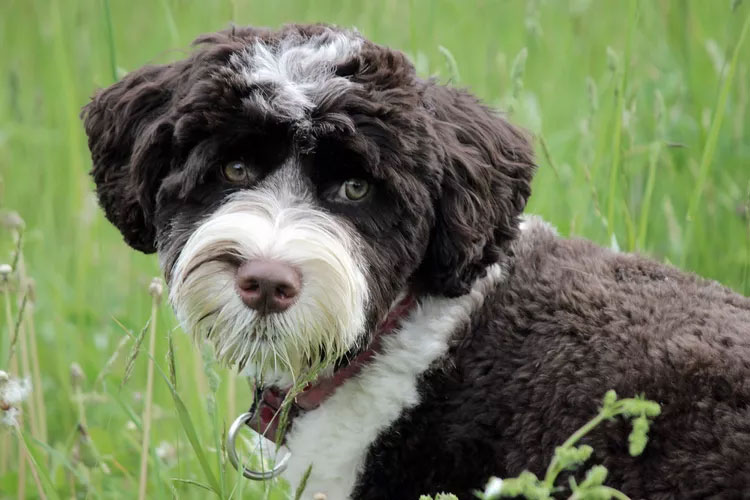
Traditionally, coats are cut in one of two styles: the "lion cut" or the "retriever cut." The former cuts the muzzle, hindquarters, and base of the tail short, leaving all the rest long, while the latter cuts the coat evenly over the entire body, down to about 1 inch in length.
The Portuguese water dog is an extremely infrequent shedder. Most of the hair they do release gets caught up in their waves or curls. While no dog is truly "hypoallergenic"—they all shed to one degree or another—Portuguese water dogs are well-known as a breed that's great for people with allergies to hair or dander.
They have webbed feet to aid in swimming, and their bodies aren't quite square, being slightly longer than they are tall. Female dogs come in at 17–21 inches tall, with male Portuguese water dogs a bit taller at 20–23 inches.
Temperament
Much like their poodle cousins, the Portuguese water dog is stunningly smart. Originally bred to be fishing dogs, they were trained to herd schools of fish into nets, retrieve broken nets and tackle, and to act as couriers, delivering messages from ship to ship and ship to shore. Because of their smarts and appetite for work, Delgado says Portuguese water dogs might do better with experienced dog owners.
Now that they have largely made the transition from fish to families, Portuguese water dogs love learning tricks and playing games. They will often act like clowns to try and make their people laugh and get their attention. If you're looking for a dog to compete with, they do fantastically well in obedience, agility, flyball, and (of course) water competitions. If you're considering competition sports, make sure to have your pup checked out by a veterinarian first.
Portuguese water dogs are gregarious, outgoing dogs who are happy to make new friends. Sarah Moore, DVM, Diplomate ACVIM (Neurology), says they can do very well in family households, with the right circumstances.
"They are often affectionate and very good with children and other pets, but they're going to need a fair bit of physical activity and training," she says. "So you want to be sure you have the time to devote to these things before adding a Portuguese water dog to the family!"
Moore says the breed can sometimes be suspicious of new people, but with proper socialization they are happy to let unfamiliar people pet them.
Also much like the poodle, the smart Portuguese water dogs will get bored easily if you're not keeping them stimulated. They are a very high-energy dog who will require at least an hour's worth of exercise every day. This is another reason why competition training is such a great activity for them. But no matter how you choose to do it, keeping your dog fit and happy needs to be a priority because they have a strong tendency to chew when they're bored or frustrated. If you leave your Portuguese water dog at home alone for too long or don't exercise him enough, you will come home to all your stuff chewed up.
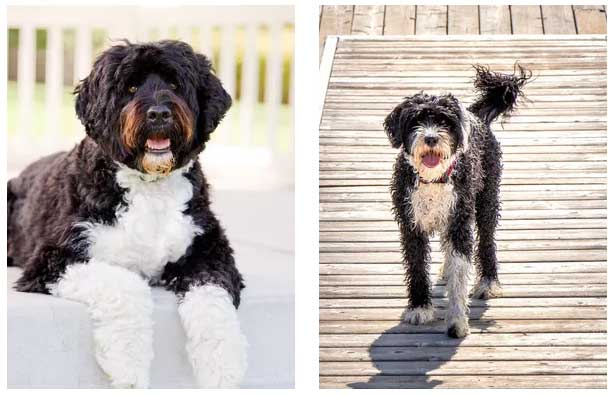
Each of Delgado’s four dogs has jobs or sports to keep them busy. Delgado runs with one of them, and her 3-year-old Brinkley likes to wake her up on weekend mornings by retrieving her slipper socks, hopping up on Delgado’s bed, and dangling the socks over her owner’s head.
"They're working dogs," she says. "They want to work, and they want to please you."
As with any highly intelligent dog, obedience training is going to be imperative for Portuguese water dogs. Not only will it help keep them stimulated, but it will curtail some of their less-desirable traits, like the breed's tendency to greet people by jumping up, or their notorious reputation as counter surfers.
Portuguese water dogs do very well in households with cats and other dogs. They have a low prey drive, making them a good choice for households with other small animals as well. They love playing with children, but they can be a little too rambunctious for very small ones.
Portuguese water dogs also excel in therapy or service training, and some undergo training to become service dogs for deaf or hearing-impaired individuals, easily learning to bark when the phone rings or there's a knock at the door.
Living Needs
Mental and physical stimulation are the two biggest factors for housing a Portuguese water dog. As long as you are taking them out for a run or a game of fetch every day, they can adapt very nicely to apartment living. If you've got a house with a big, fenced back yard? Even better. And if you have a pool or lake nearby? Holy mackerel, they're in heaven.
If you’re considering competition sports, make sure to have your pup checked out by a veterinarian first.
Because the dogs have a very low prey drive, they're typically safe to have off a leash or in the front yard with supervision—they're not likely to dart off after a squirrel. Supplying a variety of toys is a great idea to keep them from being bored. By giving them a choice of toys, and with a little bit of patient positive reinforcement training, you can quickly teach them which things are OK to chew on—and which things aren't.
Care
Yup, they're going to be a handful. Here's a fun Portuguese water dog fact: Their hair never stops growing. Have you seen those pictures of the sheep in Australia who wandered off for seven years and came back looking like a giant cotton ball? That's going to be your Portuguese water dog if you don't groom them every six to eight weeks, Delgado says.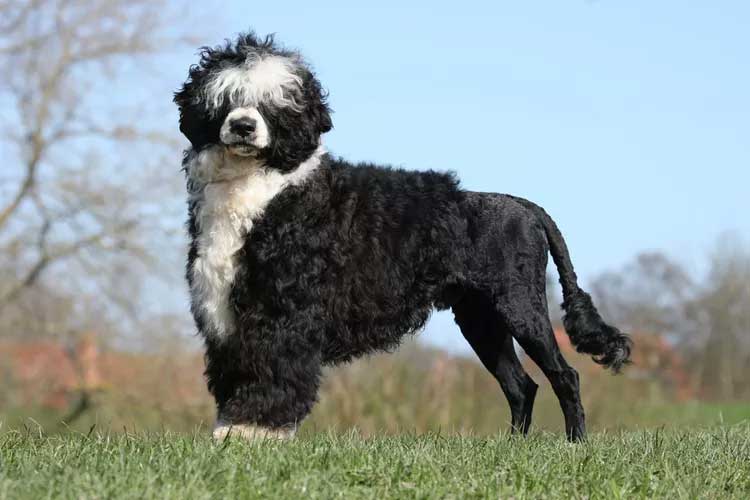
In addition to the trims, you’re going to be brushing them every other day, to keep that wavy (or curly) hair from matting up and clinging desperately to every twig and leaf it finds.
Also, if you let your dog take a dip in a chlorinated pool, a saltwater body, or a lake with algae in it, you'll want to give them a quick hosing down right after, to make sure their hair doesn't hold on to smells.
Health
Like other breeds, Portuguese water dogs can suffer from hip dysplasia. To hopefully prevent hip problems, Delgado recommends owners wait to spay or neuter their dogs until they're 18 months or 2 years old.Some research has suggested spaying or neutering dogs in their first year can precede joint damage and other diseases in some breeds. Spaying and neutering around the six-month mark can spur a growth spurt before a Portuguese water dog's growth plates are closed, which can cause joint problems, Delgado says.
However, Theresa Entriken, DVM, says Portuguese water dogs have not been among the breeds included in delayed neutering studies. In fact, a study published in 2020 found that most breeds can be neutered "without referral to a particular age."
"The bottom line is that there is no easy answer, and pet parents should talk with their veterinarian about the benefits and risks of neutering their pet in relation to orthopedic problems, cancer, or other concerns such as urinary incontinence," Entriken says.
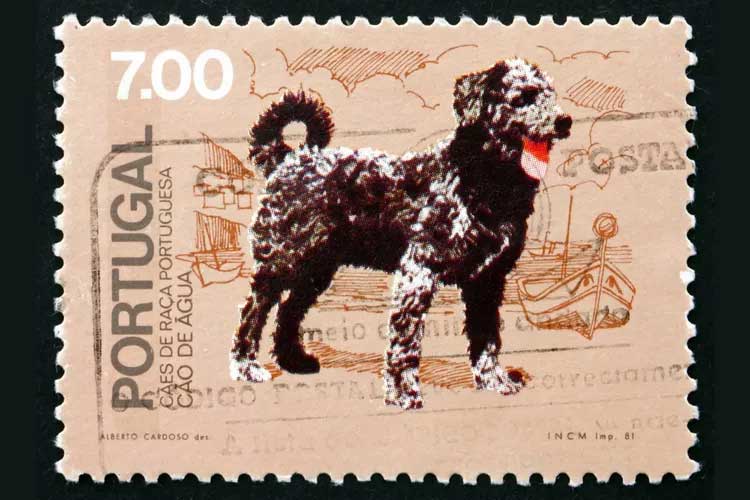
Portuguese water dogs can also have issues with cataracts and progressive retinal atrophy—a recessive gene that causes night blindness and can lead to total blindness. Your vet can conduct a simple DNA test to find out if your dog is a carrier of the gene or not.
“We can also check for a dog’s ability to see in various conditions by checking their response to light,” says Michelle Beck, DVM, CCRT, CVA-Veterinarian, with the Backlund Animal Clinic in Omaha, Neb. “Watching their pupils react to light and dark changes. One thing I do with animals is to set up a room with obstacles in various light settings and see how they navigate those obstacles with bright light, then again in progressively lower light settings.”
You may also want to have your vet test for Juvenile dilated cardiomyopathy, which is another recessive gene that, while extremely rare, is fatal.
New puppy owners should have their vets conduct all the tests and screenings recommended by the Portuguese Water Dog Club of America, the official breed club.
History
The first mention of a dog resembling our modern Portuguese water dog comes from a written account from a monk in 1297, who reported seeing a sailor pulled from the sea by a dog with a "black coat, the hair long and rough, cut to the first rib and with a tail tuft," according to the Portuguese Water Dog Club of America.For centuries, the dog thrived on the coasts of Portugal and Spain, with (possibly apocryphal) accounts of the Spanish Armada employing the dogs for ship-to-ship communications. Their numbers steadily declined throughout the 19th century as the number of fishermen waned and technology increasingly phased out their jobs, and by the 1930s, the dog was nearly extinct.
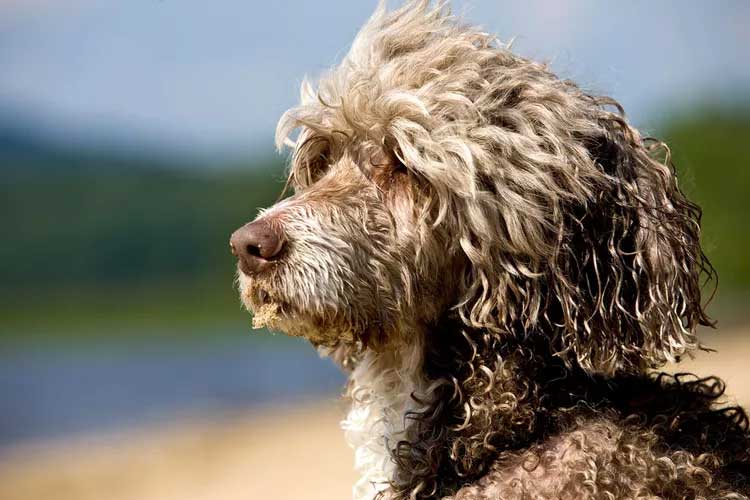
This tide was reversed in the 1930s by a Portuguese shipping magnate named Vasco Bensaude, who began purposely seeking the dogs out from fishing villages, with an eye towards and re-establishing the breed.
In the 1960s, two Americans named Deyanne and Herbert Miller, Jr. brought the dogs to the U.S., the first one a descendent of Bensaude's kennels. The Portuguese Water Dog Club of America was founded in 1972, and the breed was recognized by the American Kennel Club in 1981.
Fun Facts
Possibly the most famous Portuguese water dogs in America are Bo and Sunny, President Barack Obama’s family dogs during their two-term stay in the White House. Obama promised daughters Sasha and Malia a dog after the 2008 election, and Bo joined the Obamas in 2009. Sunny joined the family in 2013.Actor Raymond Burr was an early proponent of the dogs, owning several from the Miller’s stock and helping establish the breed in the U.S.
These dogs are supposed to be good in the water—it’s in their name for goodness sake—but it might take puppies some time to get used to it, as this segment from Animal Planet’s "Too Cute" shows.